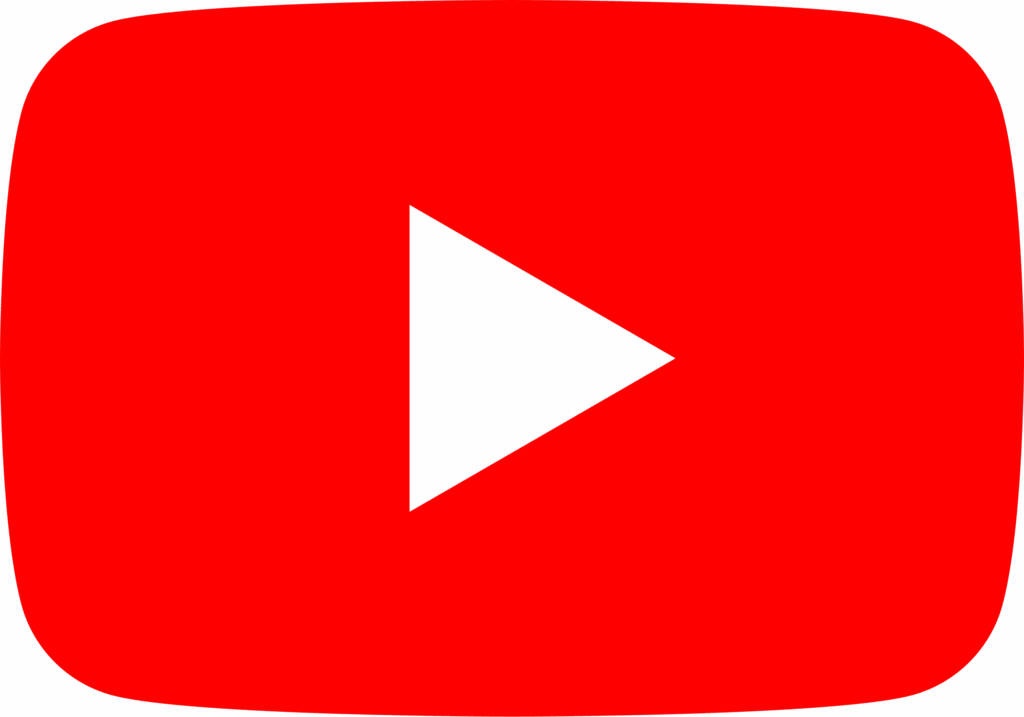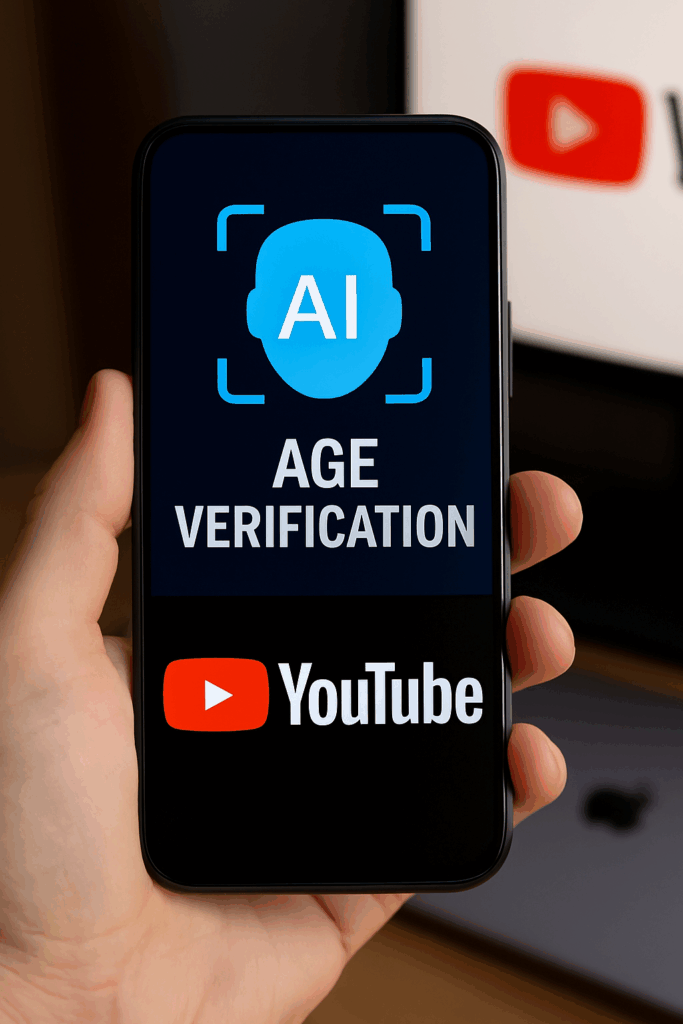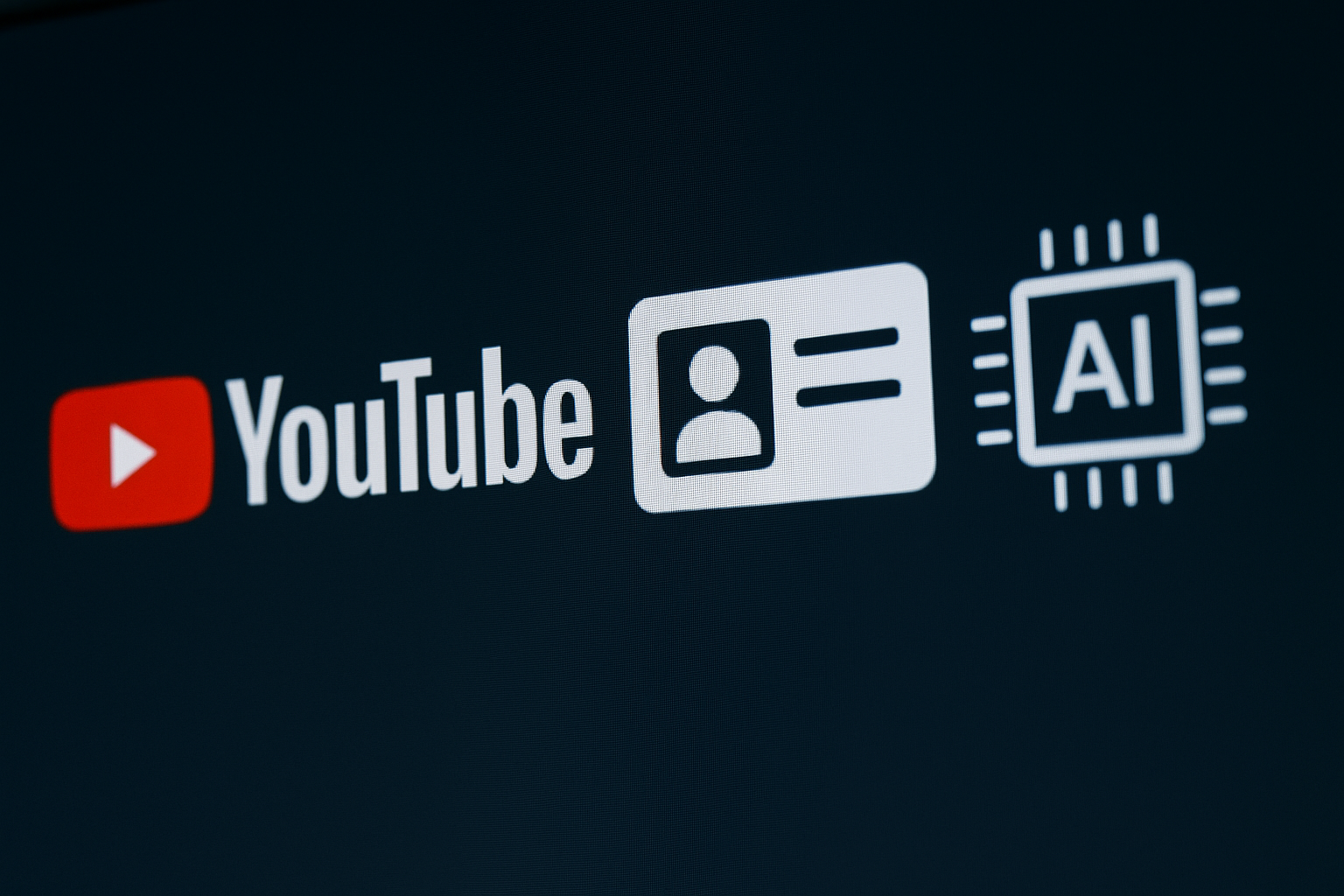YouTube is turning to artificial intelligence to help decide if you really are the age you claim to be. The platform’s new AI-powered age verification system scans user behavior to estimate whether an account holder is under 18. If the system decides you’re a minor, it moves you into a teen account with tighter safety controls. This happens even if you entered a different birth date when signing up.
What’s Happening & Why This Matters

YouTube officially rolled out the AI verification system in the United States on 13 August. This followed earlier testing in other countries. The change comes amid growing pressure on social media companies to protect young people from harmful or inappropriate content.
Instead of relying solely on the date of birth you provide, YouTube’s AI uses signals like your viewing habits, search history, and the length of time your account has existed. If it believes you’re under 18, your account will be shifted into teen mode. This includes restricted access to age-limited videos, bedtime reminders, adjusted recommendations, and the disabling of personalized ads.
A Team YouTube representative described the move as a fundamental part of safeguarding users:
“This work is fundamental to how YouTube safeguards our users, and we’ll continue to invest to protect their ability to explore safely online.”
Adult users misidentified as teens can appeal by proving their age with a government ID, credit card, or selfie. But privacy advocates warn that this process forces people to hand over sensitive personal data. Suzanne Bernstein, a lawyer for the Electronic Privacy Information Center, voiced concerns in an interview with Ars Technica:
“Discomfort with certain appeals processes which require providing really sensitive personal information is totally understandable.”
YouTube claims it does not retain ID or credit card data for advertising purposes. However, the company has not fully explained how that information might be stored or used otherwise. This has led to skepticism among some users.
Public Backlash

The update has sparked resistance. A Change.org petition opposing the system has already gathered more than 68,000 signatures. The petition’s creator, YouTube gaming content creator Gerfdas Gaming, calls it “blatant censorship hidden behind a thin veil of ‘protect the kids.’”
On social media, the backlash includes hashtags like #boycottyoutube. Users warn that AI could wrongly flag adults for enjoying content styles associated with younger audiences — such as animated videos or gaming streams.
Context
YouTube is not alone. Meta has introduced similar AI tools to verify teen ages on Instagram. Additionally, TikTok uses AI to detect underage users. Other platforms such as Reddit and Discord have implemented stricter age checks. This is in response to laws like the UK’s Online Safety Act, which recently activated child protection provisions.
This wave of verification measures reflects global trends in regulating online spaces for minors. Lawmakers and parents continue to push tech companies to close loopholes that let children bypass existing age gates.
TF Summary: What’s Next
YouTube’s AI age verification is a new control supporting stricter online safety measures for minors. However, it raises real questions about privacy and data handling. While the system could help keep harmful content away from kids, it also risks frustrating adult users. These users could be caught in its net.
Expect YouTube to face ongoing scrutiny as the rollout expands and privacy advocates demand more transparency about how personal data from age appeals is stored and used. If global regulatory pressure keeps building, similar verification systems may become standard across leading platforms.
— Text-to-Speech (TTS) provided by gspeech


